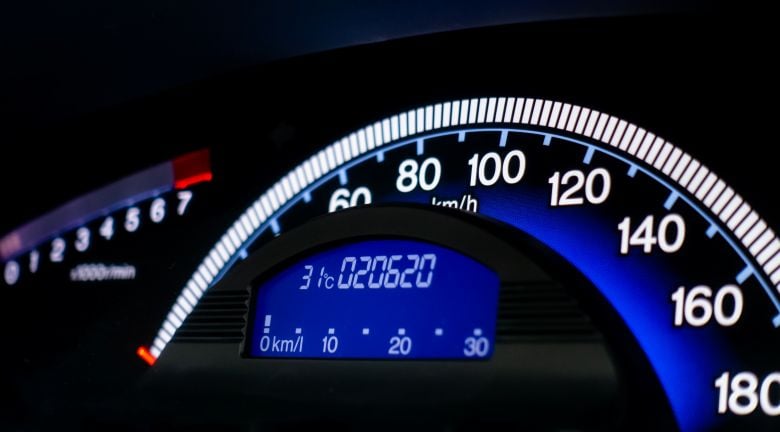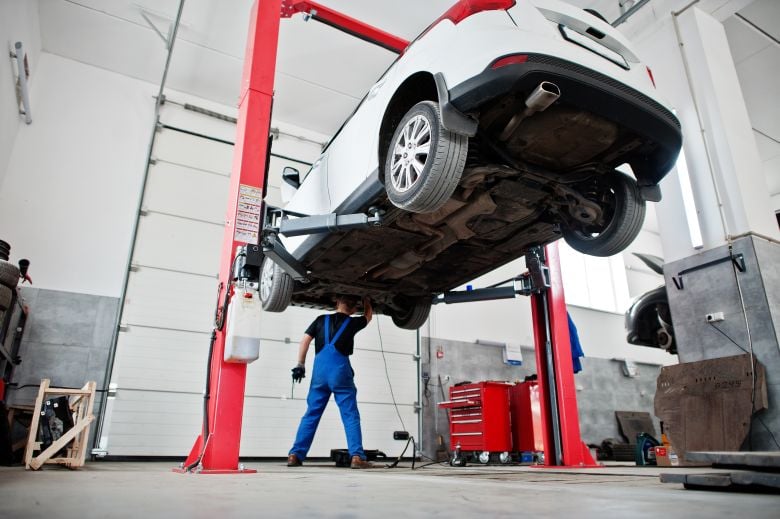
Is Dealer-Recommended, Mileage-Based Car Maintenance Necessary?
- Vehicle Maintenance
- PEAK
- March 20, 2025
Do car dealer maintenance packages offer value or should you create your own car maintenance schedule by mileage or time? Find out here!
Regular maintenance keeps your car running strong, extends its lifespan, and helps you avoid costly mechanical issues. If you've recently bought a new car, or a newer pre-owned vehicle still under factory warranty, your dealer probably recommended a car maintenance schedule by mileage or time. These services are meant to prevent problems before they happen and guard against premature wear and tear.
However, dealer recommendations are sometimes at odds with the manufacturer service schedules in your owner's manual. So, who should you listen to: the dealer or the manufacturer?
Let's dig in.


The basics of preventative maintenance
First, let's define preventative vehicle maintenance by mileage or time and explore the reasons it's so important.
Your vehicle needs specific services when you hit certain mileage, or time-based milestones. These services keep critical vehicle systems like your powertrain, brakes, filters, and fluids in strong working order. Importantly, you also need regular preventative service to maintain your factory warranty. If you overlook it, you risk voiding your warranty protection — and that will leave you on the hook for the costs of any problems that might arise as a result.
Many manufacturer and dealer recommendations line up with what's known as the "30/60/90" rule. This rule explains the routine maintenance services your vehicle should have when it reaches 30,000, 60,000, and 90,000 miles.
A basic breakdown looks like this:
- At 30,000 miles: Check your fluids, brakes, engine oil, and filters, and service them as needed.
- At 60,0000 miles: Inspect the battery, tires, brake fluid, transmission fluid, and all belts, plugs, and hoses. Some or all of these components may show signs of wear and require replacement.
- At 90,000 miles: Your vehicle is now getting into higher-mileage territory, and your hoses, spark plugs, and timing belts will likely have worn down by now.
The 30/60/90 rule has its limitations, since some service recommendations are based on time, not mileage. Other tasks include both recommendation types: for example, you might hear that you should have an oil change every 5,000 miles, or every six months.
As a general rule of thumb, you can follow the mileage-based recommendation if you drive a lot, and use the time-based recommendation if you don't.


What do dealers recommend, and why?
Dealerships follow the manufacturer's scheduled maintenance recommendations, but many also add additional inspections and services. So, what's behind the disconnect?
If you ask a dealer, they'll likely tell you that manufacturer recommendations cover the bare minimum you need to do to maintain your warranty — and that you should only expect the bare minimum from your vehicle as a result. They'll probably spin their plan as a way to optimize your vehicle's performance and extend its lifespan.
You might also hear that manufacturer recommendations are overly generalized. Dealerships might try to sell you on the idea that local road or climate conditions justify a more robust car dealer maintenance package.
While there may be some truth to these recommendations, experts who dig into the details of car dealer maintenance packages often find they're mostly built around additional adjustments, inspections, and fluid top-offs or replacements.
Bottom line: There's a large contingency of consumers and automotive insiders who think dealer recommendations are mainly designed to pad the dealership's revenue at the customer's expense.
Dealer-recommended prepaid service packages
Your dealer may also try to upsell you on a prepaid service plan that includes all your scheduled maintenance. This usually happens as you're finalizing the purchase agreement, and the dealer's offer typically involves flat-rate services for the duration of your factory warranty. Some dealers also offer the option to extend the plan beyond the original warranty.
There are a few things you should know about these plans if you're ever offered one:
- Plans typically cover only scheduled maintenance, routine preventative care, and multi-point inspections of major systems and components.
- "Consumables," which are components that need regular replacement due to wear and tear, won't be included. Examples of consumables include brake pads, rotors, and windshield wipers.
- You'll need to pay out of pocket for any parts or services that aren't explicitly covered by the plan.
On one hand, prepaid plans take all the guesswork out of your vehicle maintenance. Their costs are usually rolled into your financing plan, which also means you won't have to worry about paying out of pocket when you bring your vehicle in for service.
On the other hand, you risk exposing yourself to "over-maintenance" (a.k.a. shelling out money for services your vehicle doesn't actually need). You may also have to lock yourself into having your vehicle maintained at the specific dealership where you bought it, which may not work out if you later find that you’re not a huge fan of their technicians.
The most compelling reason to consider a prepaid plan is if the turnkey convenience they offer is a high priority for you. Prepaid plan costs usually work out to significantly more than you'd pay by strictly following the manufacturer's guidelines. In many cases, prepaid plans only deliver value if you're willing to pay a premium for the convenience they provide — and want to roll future service costs into your financing.


An alternative worth considering: Create your own car maintenance schedule by mileage or time
If you decide not to go with the dealer's recommendations, you can (and should) create your own service schedule. When doing so, always source maintenance information directly from your owner's manual and factory warranty.
As noted earlier, some tasks are mileage dependent while others are time based. The key is to follow manufacturer guidelines to the letter — that's the only way to maintain your all-important factory warranty.
Remember that you don't have to take your vehicle to a dealership to have it serviced. In fact, independent garages tend to charge significantly less than dealerships since they usually have far lower overhead costs.
Pros and cons: dealer-recommended vs. self-directed car maintenance
It isn't always easy to determine whether or not a car dealer's maintenance package is the right choice for you. To help you make the best decision, consider the unique advantages and drawbacks associated with dealer-recommended pre-paid plans and self-directed maintenance:
| Pros | Cons | |
| Dealer-recommended prepaid maintenance plans |
Ease, convenience, and peace of mind.
Routine maintenance costs are locked in and can be rolled into your financing.
Dealership technicians are specially trained to service the manufacturer's vehicles |
Dealers tend to charge more for maintenance than independent service centers
You may be required to get services from the dealership
Doesn't include the cost of "consumables"
Overall costs may be higher |
| Self-directed maintenance plans |
Overall costs tend to be lower
You're free to choose any service provider or technician you want
You don't have to worry about overpaying for excessive or unnecessary maintenance |
More complex and time-consuming to track and manage
You risk voiding part or all of your warranty if you miss a required maintenance task and problems arise |
Save money with some DIY car maintenance
If you're looking for more ways to save, consider doing some jobs yourself. Our DIY Hub is filled with helpful guides and instructional videos covering all kinds of routine maintenance tasks. Other helpful resources include this spring car maintenance checklist and these comprehensive tips on maintaining your first new car.
You can also learn:
- How to Change Car Headlight Bulbs
- How to Do an Antifreeze Coolant Flush and Fill
- How to Remove and Replace Windshield Wiper Blades
Whether you opt to have scheduled services performed at a dealership, independent garage, or DIY, make sure you document all of your maintenance and keep good service records. You'll need a paper trail if you ever need to file a warranty claim, and when the time comes to trade in or sell your vehicle.
Optimize everyday performance with PEAK products
The PEAK Auto lineup includes a long list of products that help keep your vehicle safe and strong. For high performance at a fair price, PEAK is a name you can depend on when the time comes for new wiper blades, new headlights, antifreeze top-offs, and windshield wash refills. Include PEAK in your routine car maintenance plan to get the most out of the investment you've made in your vehicle.

